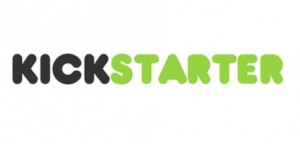Crowdsourcing, Limited Partnerships And Other Tools For Financing Our Clean-Energy Future
 We spend a great deal of time looking at innovative policy, business, and financing models that can support the broad and steady growth of solar, wind, energy efficiency, green buildings, and other clean-tech sectors. And in many ways, we believe it’s no longer really an issue of technology development. Costs continue to come down across the clean-tech value chain while the industry, along with the products it offers, expands and matures.
We spend a great deal of time looking at innovative policy, business, and financing models that can support the broad and steady growth of solar, wind, energy efficiency, green buildings, and other clean-tech sectors. And in many ways, we believe it’s no longer really an issue of technology development. Costs continue to come down across the clean-tech value chain while the industry, along with the products it offers, expands and matures.“The technologies are here,” explains Aaron Berg of Portland-based Blue Tree Strategies and one of the key architects behind Clean Energy Works Oregon, an on-bill energy efficiency financing vehicle for homeowners. “It’s no longer a technology problem but more about creating and enabling breakthrough business and finance models.”
In the past few months two financing options, one which we’ve been tracking closely and the other which came as a surprise, have been gaining traction and support. And in many ways they couldn’t be more different. One relies on tried and true capital models historically deployed around the exploitation of traditional fossil fuels, in particular natural gas. The other plans to use the power of 21st century, web-based crowdsourcing to democratize the financing process of solar installations. While attacking the clean-energy finance conundrum from very different angles, each approach has the power to tap the value of efficiency and renewables in potentially remarkable ways.
Let’s look at master limited partnership (MLPs) first. Used successfully for traditional oil and gas investments for decades, these vehicles, which trade like corporate stock, allow investors to earn dividends that usually fall in the six percent range. However, current MLP rules are structured to cover only oil and gas, and exclude clean-energy investments. Simple tax code changes could enable these investment structures to leverage the built-in annuity streams of clean energy, and could expand decent-yielding investment opportunities to a broader retail market. Some members of Congress seem to think so, and the idea is rapidly catching on with support from corporate and industry stakeholders. Senator Chris Coons (D-Delaware) has introduced the Master Limited Partnerships Parity Act, which at approximately 200 words, is both simple and powerful.
As Senator Coons’ web site states: “By statute, MLPs have only been available to investors in energy portfolios for oil, natural gas, coal extraction, and pipeline projects. These projects get access to capital at a lower cost and are more liquid than traditional financing approaches to energy projects, making them highly effective at attracting private investment. Investors in renewable energy projects, however, have been explicitly prevented from forming MLPs, starving a growing portion of America’s domestic energy sector of the capital it needs to build and grow.” We fully agree.
In the not-yet-tried-and-true department, others are looking at how to take a very 21st century tool – crowdsourcing/crowdfunding – and apply it to clean-tech deployment opportunities. The most notable of these is startup firm Solar Mosaic, which recently raised venture capital to the tune of $2.5 million (Series A round lead by Spring Ventures) and received a $2 million grant from the U.S. Department of Energy’s SunShot Initiative, to build an online platform that supports funding of solar projects. If the firm can become the Kickstarter of solar financing, it could help raise millions of dollars from thousands of investors, while also potentially offering decent returns. Solar Mosaic is currently in a quiet period after filing with the Securities and Exchange Commission and several states in April to offer Solar Power Notes to the public, with proceeds going to fund solar power projects.
In our forthcoming book Clean Tech Nation, coauthored with Clint Wilder, we ask a simple but important question about investing in proven clean-energy projects such as energy efficiency, solar PV, and wind deployment. “How can such relatively low-risk, high-yield investment opportunities become more widely available not only to large corporate and institutional investors like Google, but to the average retail investor?” we write. “And how can renewables and efficiency projects begin to tap the proven investment vehicles and business structures historically used in the fossil-fuel and real estate industries to gain access to an expanded pool of much-needed capital?”
Admittedly, we live in hyper-partisan times, but the effort to open up the clean-energy investment marketplace to more retail investors is well underway and gaining support across party lines. When even top GOP strategist Karl Rove supports extension of the production tax credit for wind power, you know there’s a glimmer of hope that clean energy can once again be about American jobs and competitiveness, and not a divisive post-Solyndra issue that separates Republicans and Democrats. MLPs, crowdfunding, clean energy-focused real estate investment trusts (REITS) and other emerging tools all offer the promise to bring much-needed capital to the clean-tech marketplace.
Investors will rightfully demand that those overseeing technology selection and project deployment, and those managing their funds, have the necessary experience and utmost integrity. And certainly, technology-based gains and improvements will continue to be important. But make no mistake – the greatest breakthroughs in the near to mid-term are likely to be those in the financing realm that unleash the inherent power and value of clean energy. Whoever can package a well-structured financial vehicle that returns at least five to six percent annually from trusted market players, we believe, has much to gain in the months and years ahead.
You can return to the main Market News page, or press the Back button on your browser.

